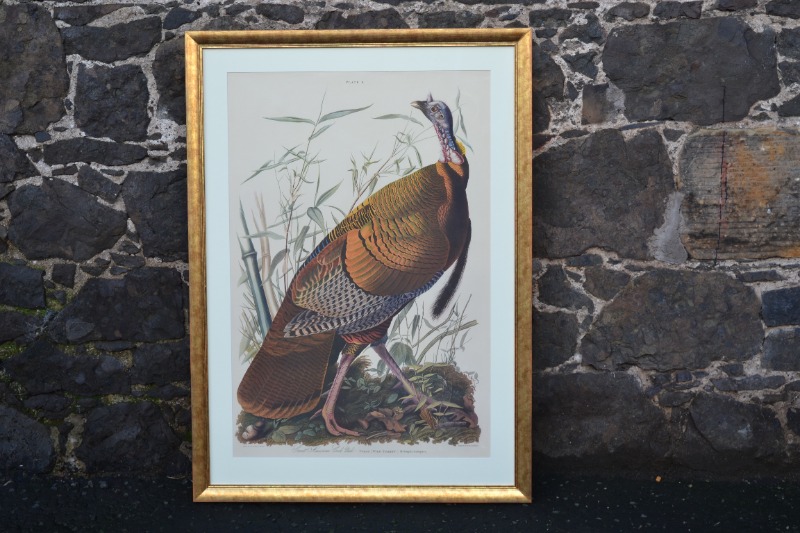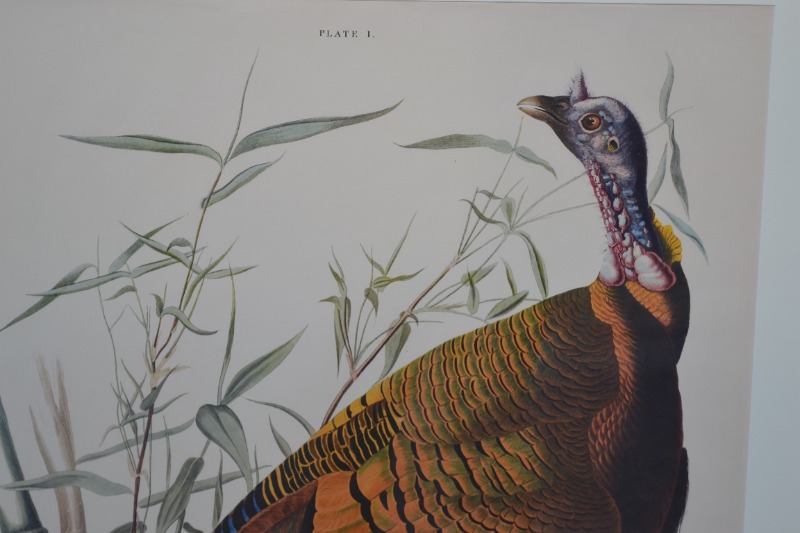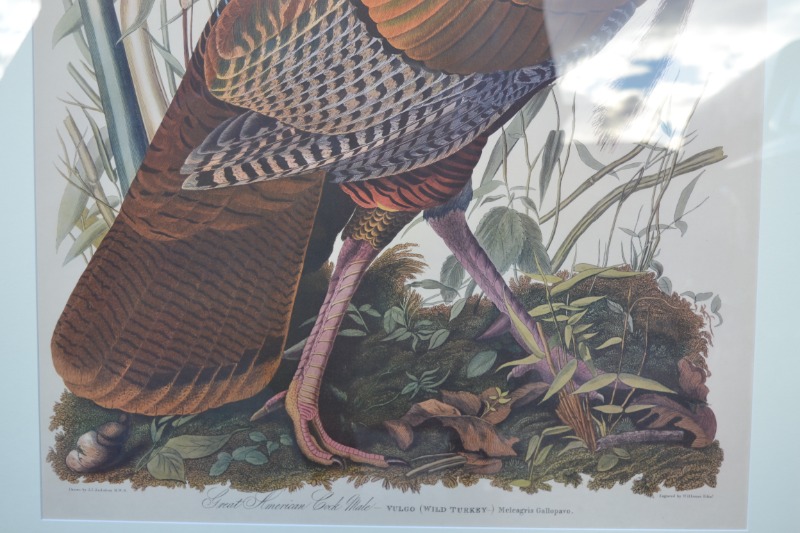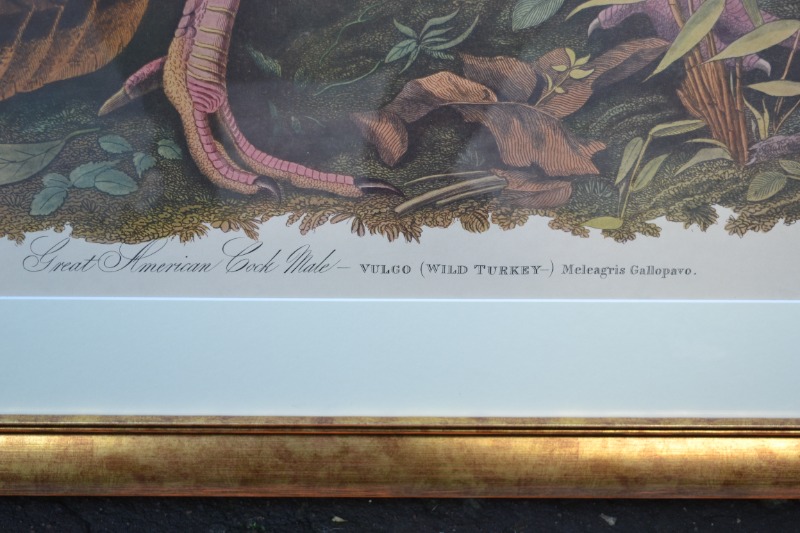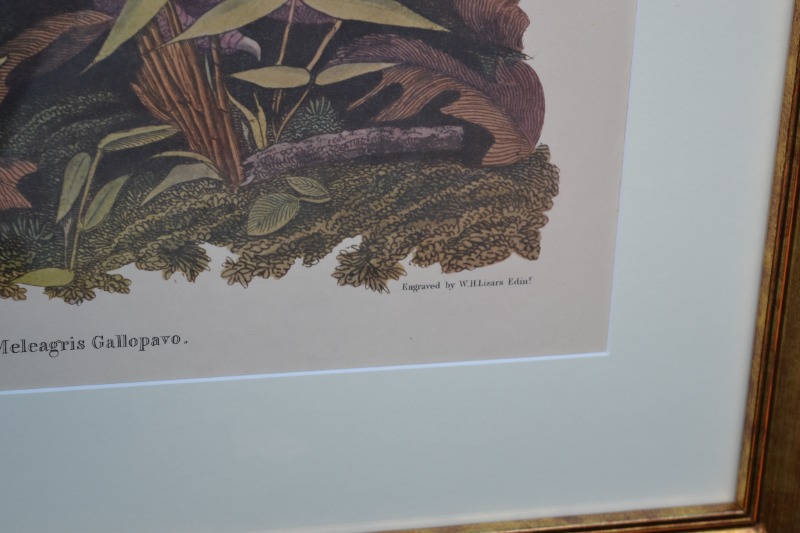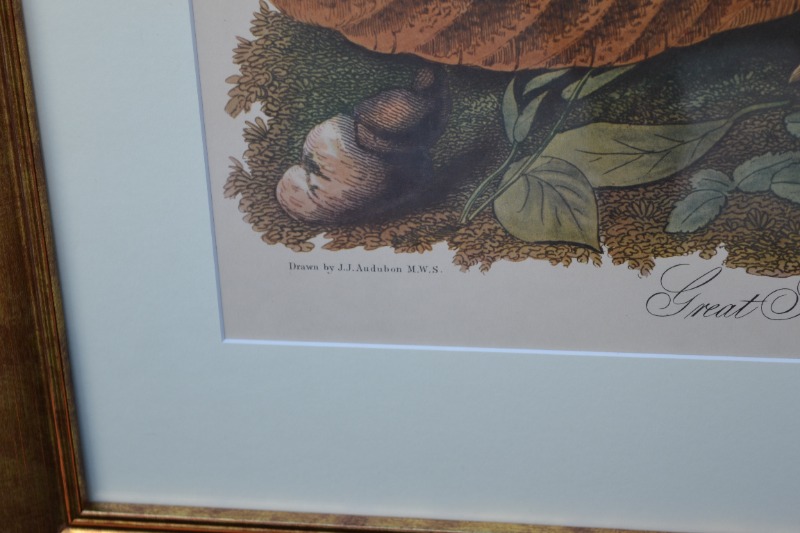Wild Turkey Male from The Birds of America By John James Audubon (1785-1851) {Leipzig Edition 1972}
Age:
1972
Material:
Print
Dimensions:
Frame: 87vm x 120cm
Shipping:
Special Heavy/Oversize Delivery
Price:
SOLD
A framed, extremely fine collotype print of Audubon’s Great American Cock Male, Vulgo (Wild Turkey) Meleagris Gallopave in original double elephant folio (DEF) size, 100 x 67cm. The Leipzig /Ariel edition of Audubon‘s famous Birds of America was produced in 1972 in East Germany. Of the 1000 sets, 500 sets were to be bound into 2 book volumes, and the remaining 500 copies of each print were to be sold loose. 40 plates were reproduced out of the original 435. They were printed on heavy, matt, smooth paper. The paper has no watermark, and there are no embossed seals or other stamps to identify the print, other than a small ‘Printed in GDR’ in the bottom right hand corner. Otherwise, it has the same credits, legend and number as the original print.
The collotype printing technique yields rich, oil paint-type colours with no colour dot pattern. It was the most accurate and beautiful photomechanical printing method of its time. It was commercially developed around 1868, and all but abandoned after World War II. Its process begins by drying a layer of light sensitive chrome gelatin on a glass plate. The areas of the gelatin layer that are exposed to light dry and are able to hold ink for printing. The areas of the gelatin layer that are not exposed to light do not dry and are capable of absorbing water and repelling ink. This is similar to the techniques used in printing a stone lithograph. A separate gelatin coated glass plate is used for each colour in the final print. Generally, between 500-2000 impressions can be made from each collotype glass plate.
The Wild Turkey was Plate 1. Audubon wrote of it: “The great size and beauty of the Wild Turkey, its value as a delicate and highly prized article of food, and the circumstance of its being the origin of the domestic race now generally dispersed over both continents, render it one of the most interesting of the birds indigenous to the United States of America”. Although it was still common in the unsettled parts of the States of Ohio, Kentucky, Illinois, and Indiana and the wooded parts of Arkansas, Tennessee, and Alabama, Audubon noted they were “very rarely seen” to the east of Virginia and Pennsylvania.
John James Audubon (1785-1851) was born in Santo Domingo (now Haiti) of French parents and settled near Philadelphia in 1803. In 1820, facing bankruptcy after several failed business ventures, Audubon decided to pursue his life-long interest in natural history and produce a complete record of American birds. He travelled for the next four years along the Ohio and Mississippi Rivers in search of species.
Unable to find a publisher in Philadelphia for his project, Audubon travelled to Great Britain in 1826. After exhibiting his drawings in Liverpool and Manchester, he journeyed to Edinburgh, where he met the accomplished engraver William H. Lizars. Lizars engraved up to ten of the first plates – including the Wild Turkey - but was unable to continue the project when his colourists went on strike. In 1827, Audubon engaged the noted London animal engraver Robert Havell Jr., who oversaw the project through to its completion in 1838. The principal printing technique was copperplate etching, but engraving and aquatint were also used. The prints were finished with hand colouring. At the time of its printing it was the most expensive book in the world.

